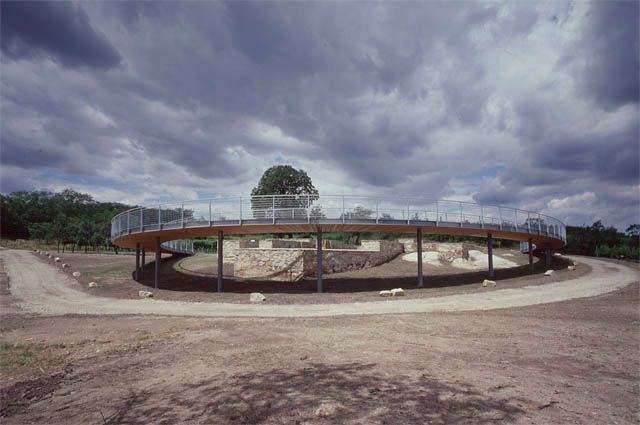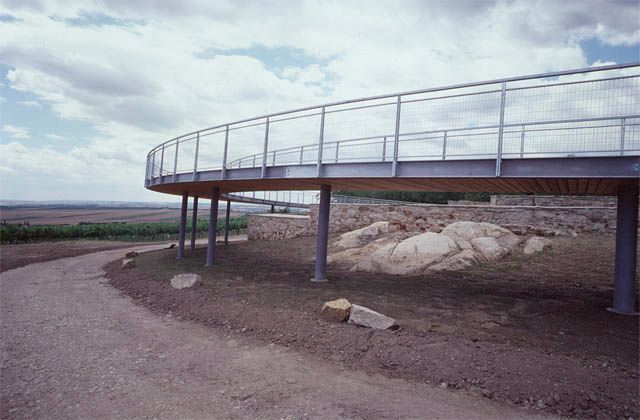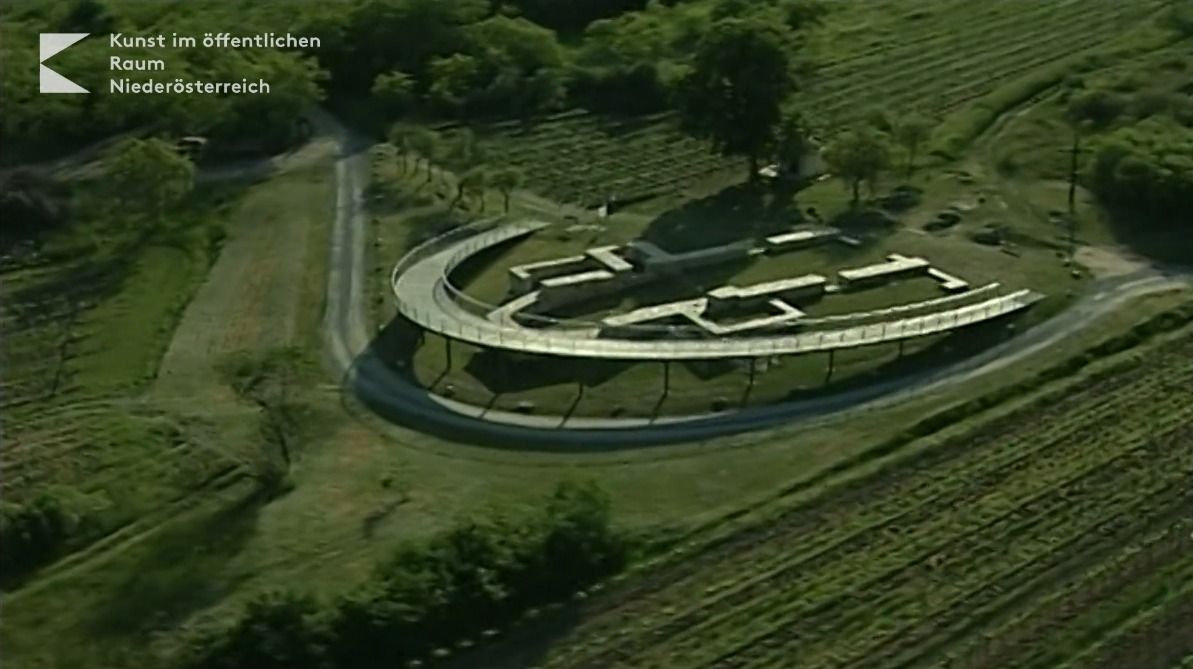Max Pauly
:
Excavation Site in Mitterretzbach
Back
Information
The elliptical form of the ground plan of the footbridge across the excavations circumscribes a field that contains the visible traces of the past. Slightly slanted against the incline of the hillside, the footbridge allows effortless access right up to the foremost edge which rises up like the bow of a ship.
The footbridge interprets the topography of the place, a low range of hills gently sloping to the East. Slightly slanted against the incline of the hillside, the footbridge allows effortless access right up to the foremost edge which rises up like the bow of a ship and yet does not display any presumptuousness. Viewed from the side, the elliptical form of the ground plan can hardly be noticed and is mostly taken for a circle; but the ellipse has a direction, and it is centered in a less domineering fashion than the circle. Rather, it circumscribes a field - a field that contains the visible traces of the past, the perception of which is facilitated by the footbridge. Unlike most other bridges, Max Pauly's footbridge is not mainly an engineering archievement, even though all the static calculations were correct and ensured sufficient structural safety. First and foremost, it is a work of architecture which does not stress its aspect of 'having been made'. Therefore, both its upper and lower side are covered with larch wood boards, emphasizing the slab-like charakter as well as the slanted surface. A view of the primary and secondary construction supports would have spoiled this impression, so the round bearers were not put into the ground vertically, but at a right angle to be surface of the footbridge. This implies that they are part of the footbridge, which turns into a light, airy object that obtains autonomy against the more earthed foundations of the church.
(Walter Zschokke)




